Reusing Resources for a More Sustainable World
By Chen Li-an (陳麗安)
Photos by Wang Yanling (王燕玲)
Abridged and translated by Syharn Shen (沈思含)
Reusing Resources for a More Sustainable World
By Chen Li-an (陳麗安)
Photos by Wang Yanling (王燕玲)
Abridged and translated by
Syharn Shen (沈思含)
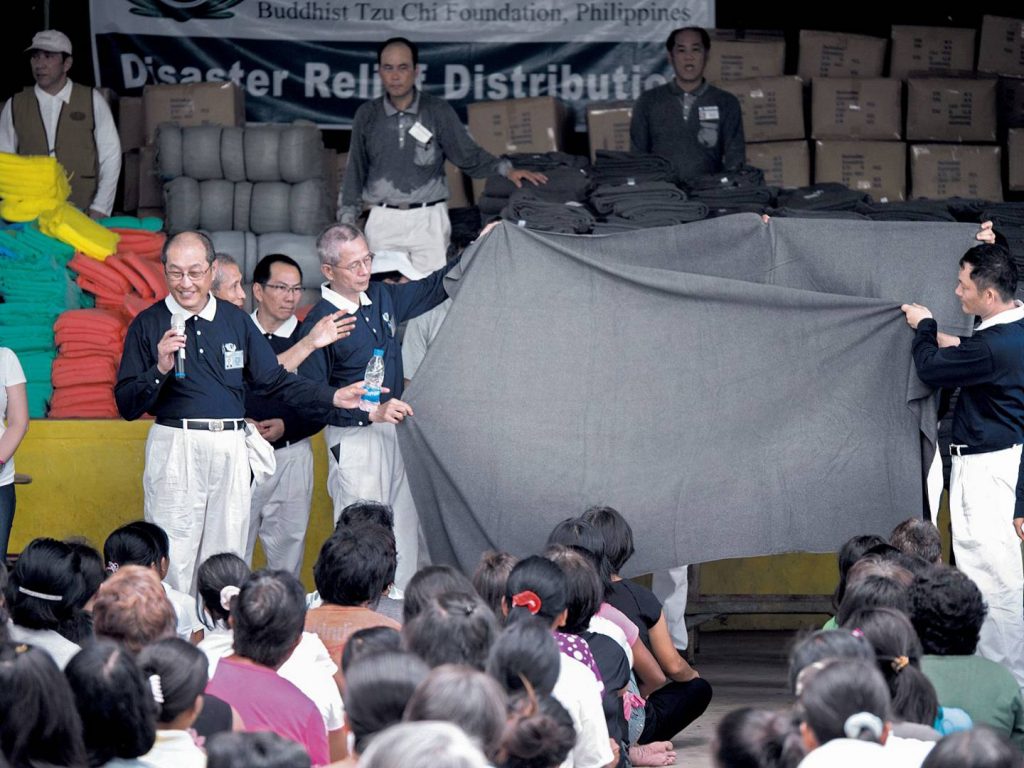
At a Tzu Chi aid distribution for survivors of Typhoon Haiyan in the Philippines, a volunteer explains to the local residents that the thermal blankets they are about to receive were made from recycled PET bottles and invites everyone to join in the effort to protect the environment.
Taiwan has achieved one of the highest recycling rates in the world, but there are still many recyclables outside the recycling system that end up in incinerators—a problem that is also faced by many countries. Even with an adequate recycling system that sorts waste from the moment of disposal, many resources are not recycled for cost-effective reasons and end up incinerated or exported to other countries.
"This creates immense waste!" exclaimed Marshall Siao (蔡思一), director of R&D at Jing Si Pureland. He said that plastics—the bulk of all recyclables—are made from petroleum, which is a precious resource that takes at least millions of years to form. Yet, plastic products soon become waste as they are discarded shortly after use.
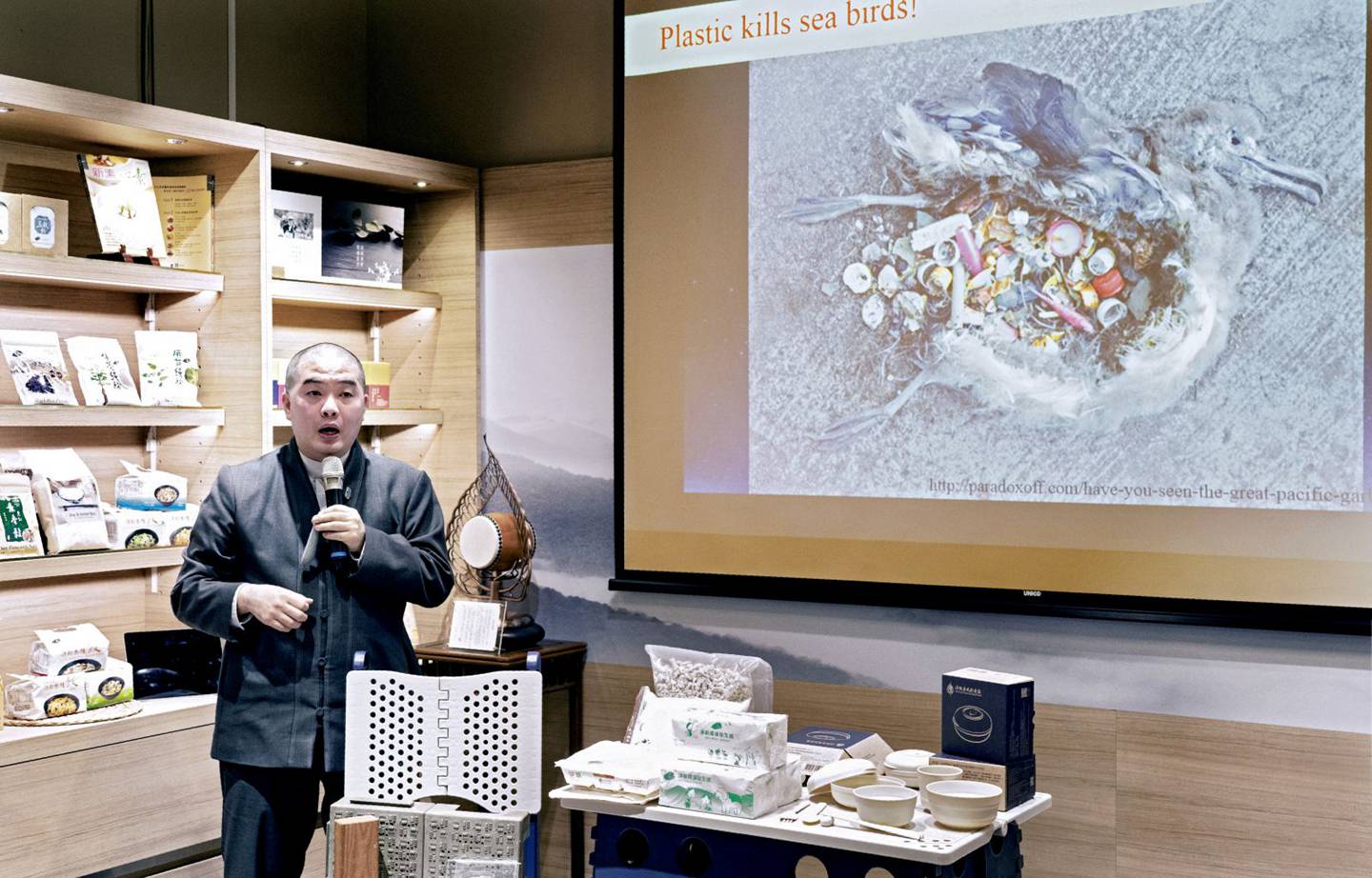
Marshall Siao explains the devastating impact of waste on wildlife and the environment as he shows the plastic items ingested by a sea bird.
According to a research article published in Nature in 2018, the Great Pacific Garbage Patch formed by accumulated debris in the North Pacific Ocean has reached an area of 1.6 million square kilometers and is full of PET bottles, plastic waste, and disposed fishing gear.
"Plastics that have been ingested by sea birds or fish can all be recycled to create many products!" Siao said that products made from petroleum or trees have precious economic value, so it's not enough to just recycle them, especially if they might be mishandled and further cause harm to the environment. Why not use waste to help create a circular economy in which resources are continually reused?
Making Fabrics from Recycled PET Bottles
For many, it may be hard to imagine high-quality products made from recycled waste, but putting recyclables and leftover fabric back into production has become a common practice in many industries. An example in Taiwan is the making of fabrics from recycled PET bottles. One of the best known products of DA.AI Technology—a Taiwanese social enterprise founded in 2008—is a thermal blanket 100% made from recycled PET bottles.
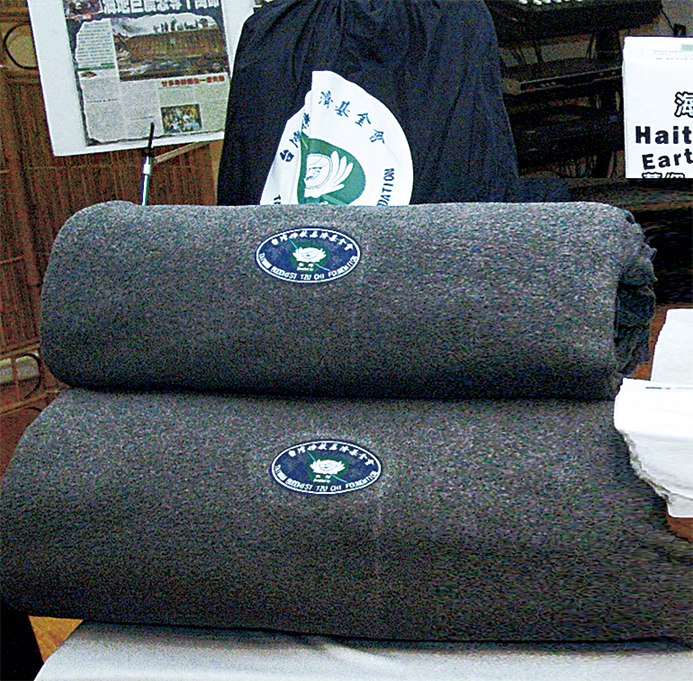
DA.AI Technology's thermal blanket (180 cm x 230 cm) is made from 67 recycled PET bottles and saves 4.28 kg of carbon dioxide, 1,085 mL of petroleum, 180 L of water, and 3.49 kg of carbon emissions.
Together with over 150 partners, DA.AI Technology has turned recycled PET bottles and made them into fabric to create not only thermal blankets, but also suits, children's clothing, backpacks and tote bags. For each product, the number of recycled PET bottles used to make the product as well as the amount of carbon dioxide, petroleum, water and other resources saved in comparison to a product made from raw materials are specified online. This information aims to get consumers to think twice when they buy everyday items, hoping they can refrain from overbuying and consider products that have been recycled and reused.
In 2019, DA.AI Technology bought over 1,700 metric tons of recycled PET bottles from Tzu Chi's recycling stations to create new products. Yet, many consumers still associate recyclables with dirty litter, so to increase the general public's acceptance of products made from recyclables, it is crucial to not only focus on education and promotion, but also on increasing product quality.
"The fact that we can make long fibers from recycled PET bottles to turn them into yarn means that the materials we use are very clean," noted DA.AI Technology's executive director Li Ding-ming (李鼎銘), adding that the materials have been very carefully sorted by Tzu Chi's recycling volunteers, who remove caps and neck rings while handling the bottles. In addition, each product is tested to meet safety and quality standards. Rather than stressing on technology, "we hope our customers can feel the care and love for the environment behind the making of the products," Li pointed out.
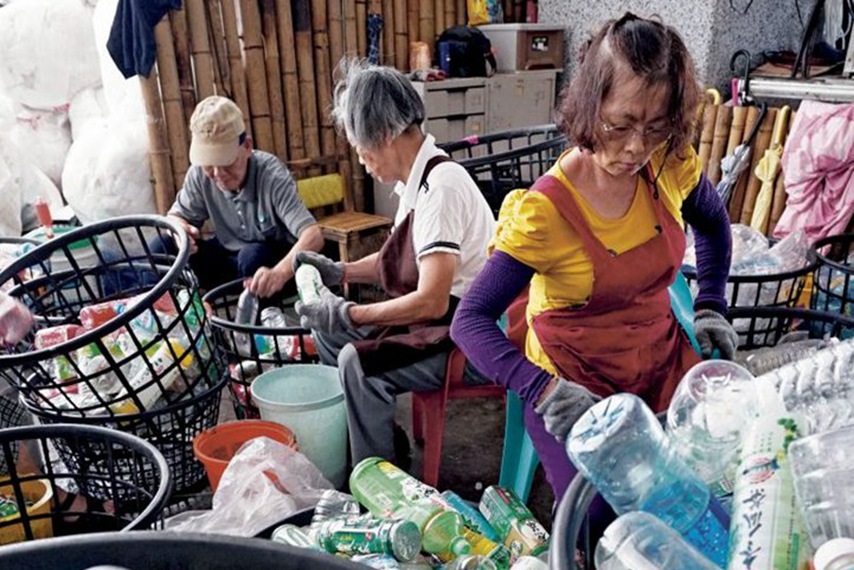
At a Tzu Chi recycling station, volunteers remove the caps and neck rings from recycled PET bottles and sort the bottles according to different colors.
"For many recycling volunteers, recycling is not only about helping to create a circular economy. They feel part of a circle of love, knowing that at least one PET bottle that they have recycled will be made into thermal blankets to be handed out to people in need around the world." Li also hopes that by joining this green supply chain, his partnering companies will not only showcase expertise, but also do something positive for the environment.
In addition to recycling and reusing PET bottles, leftover fabrics from the production process can also be reused. In an effort to move from reducing waste to zero waste, DA.AI Technology has developed a technology in 2019 that recycles and reuses products made from recyclables, furthering the cycle of reusing resources.
Having developed technologies to reuse recycled PET bottles, DA.AI Technology is now focusing on developing products made from recycled PET and PP materials, hoping to transform recyclables into products of high value and encourage more people to make green choices in daily life.
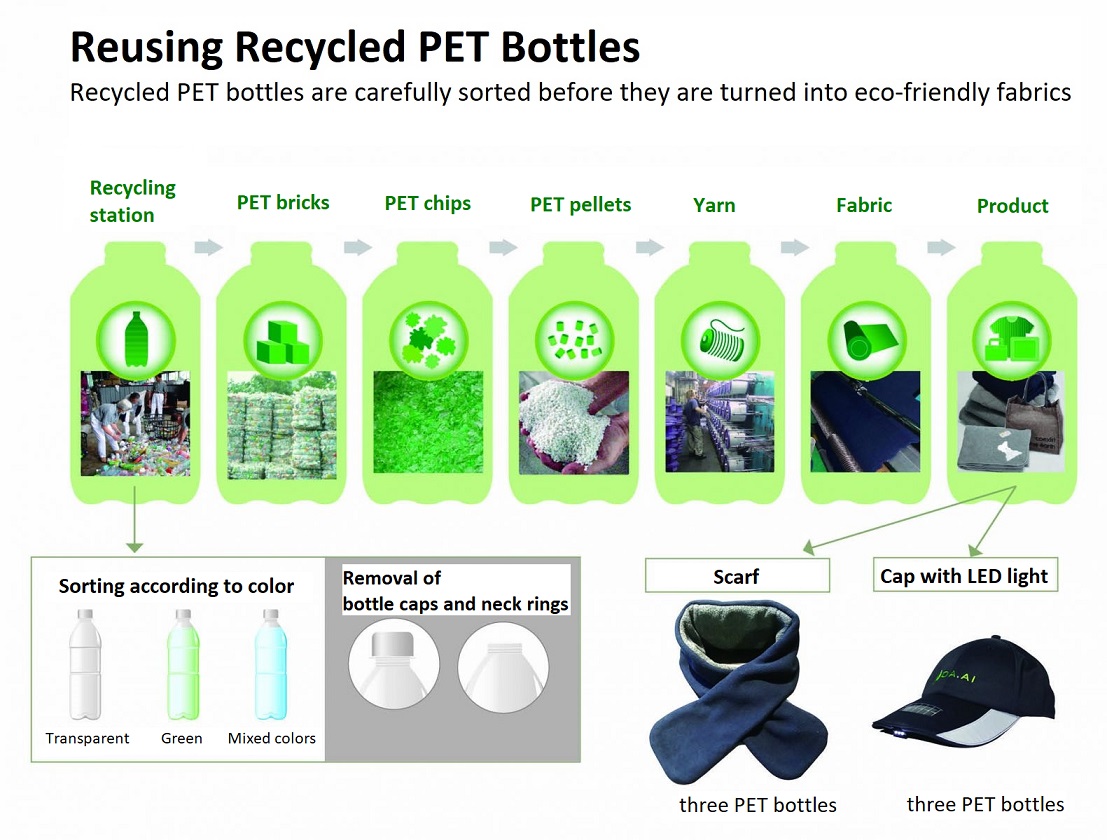
Turning Paper Containers into Bricks and Tissue Paper
Products made from recyclables not only include clothing and everyday items, but also construction materials. After two years of development, Siao has created bricks made from the plastic coating of recycled paper containers.
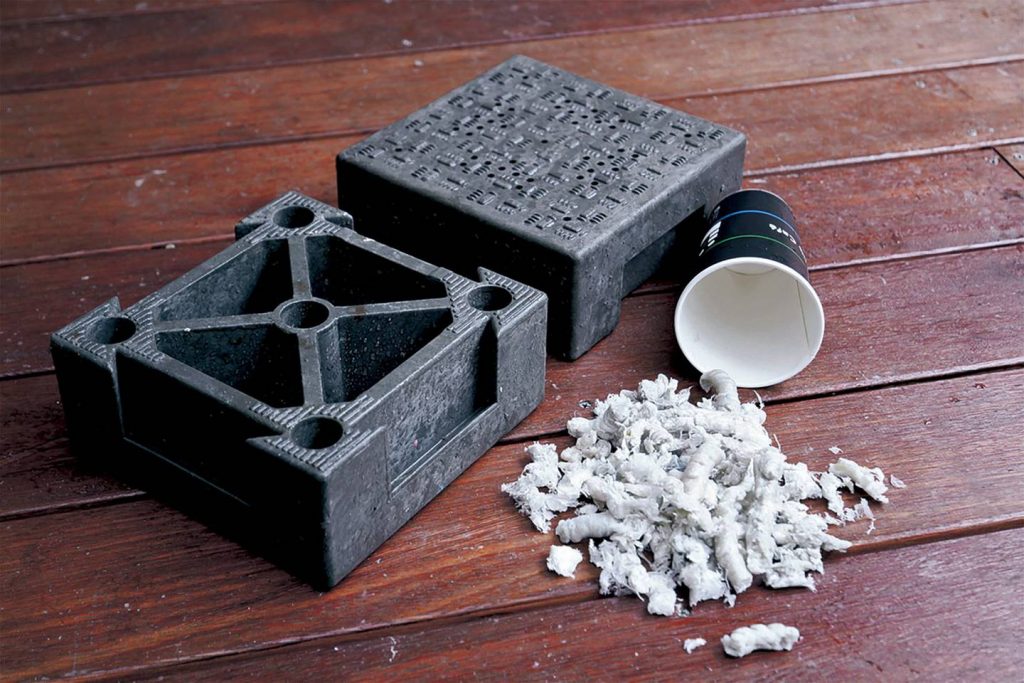
Made from the plastic layers of paper containers, these eco-friendly bricks are as strong and durable as concrete bricks. Using 100 square meters of eco-friendly bricks saves 20 metric tons of concrete and the burning of four metric tons of plastic waste.
While attending the 25th Conference of the Parties (COP25) to the United Nations Framework Convention on Climate Change (UNFCCC) held in Spain in 2019, Siao made the following statement. "The economic cost of air pollution is ten times the cost of WWII!" Many people think that paper containers are eco-friendly since they are recyclable, but little do they know that paper containers are one of the main causes of air pollution. Most paper containers become soiled after use and are thrown away as trash to be incinerated, further creating pollution in the environment.
Siao explained that paper containers are made up of 30% to 33% plastic and need a special equipment to separate the paper from the plastic layer. Most often, the composition of the plastic layer is complex, making the plastic hard to recycle, so the plastic is often incinerated in the end.
"Paper containers create a huge problem in the world, and there hasn't been an effective way to tackle it." To work towards effective recycling and zero waste, Siao came up with a way to reuse paper containers—by converting the paper materials into tissue paper and the plastic materials into breathable and permeable bricks that can withstand 40 metric tons of weight.
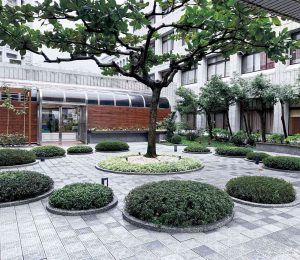
The open-air garden on the third floor of Hualien Tzu Chi Hospital is laid with 6,602 eco-friendly bricks, which can cut back 11.7 metric tons of carbon emissions. (Photo by Lin Bo-yin)
Siao noted that one brick uses 1.7 kg of discarded plastic layers, which is about the amount of plastic from 350 paper containers. Using these eco-friendly bricks can reduce mining for raw materials to make cement and cut back on air pollution. "The most important purpose of using products made from waste is to reduce harm to the environment."
The paper pulp from recycled paper containers is made into tissue paper and paper bags. A hundred metric tons of recycled paper can be turned into 60 metric tons of tissue paper, which can reduce the cutting of over 2,000 trees. "Though it's faster, more convenient and less costly to cut trees and turn them into pulp to make paper, it's not environmentally-friendly," commented a manager at a paper-making plant collaborating with Siao's company. The plant used to burn all the plastic layers separated from recycled paper containers, but now it works with Siao's Jing Si Pureland to turn the plastic into bricks. Even though the cost of reusing the recycled plastic layers is relatively high, it is an invaluable step towards a more sustainable world.
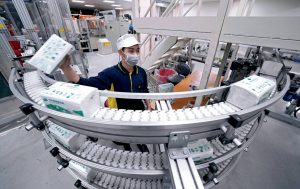
A conveyor belt carries tissue paper made from recycled paper and leftover paper from the production of paper containers. The water-based ink on the packaging is odorless, non-toxic and biodegradable.
Other than recycling paper containers and turning them into tissue paper and bricks, Jing Si Pureland also strives to turn different kinds of plastic—made from refined petroleum—into everyday items, such as bookshelves made from recycled plastics made of polystyrene (PS) and foldable chairs made from discarded washing machine drums made of polypropylene (PP). Siao believes that a right mindset as well as concrete actions are crucial in protecting the environment.
Cherishing Resources on Earth
The purpose behind creating eco-friendly products from recycled materials lies in protecting the Earth. Li emphasized that the use of recycled items is not to encourage people to keep buying and using plastic products, but for people to reflect on the impact that our daily choices have on the environment and to cherish the material things around us.
Siao also pointed out that if people keep creating waste, no amount of recycling and reusing will be enough to process all the waste. The key lies in cherishing all resources and stopping from creating more waste.
After all, we only have one Earth to call our home.
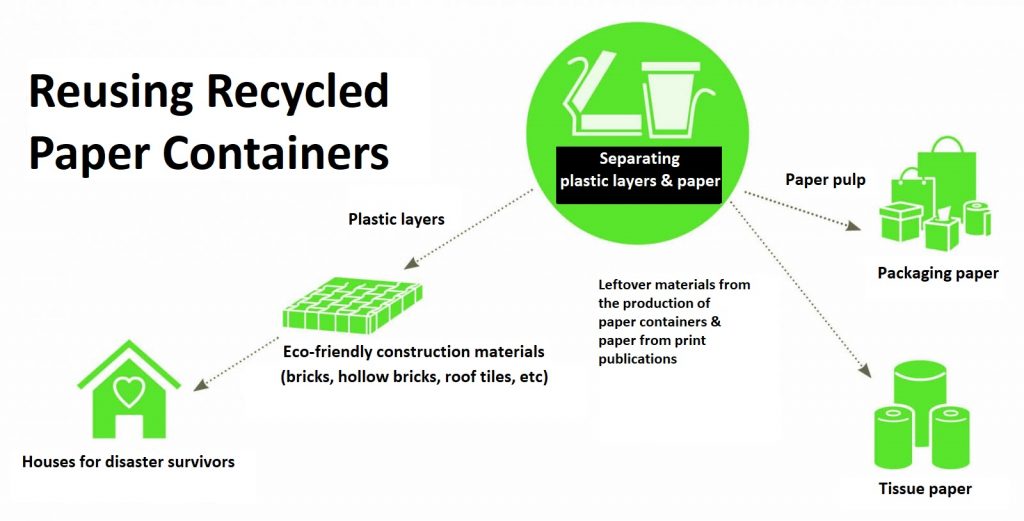
Contact Us | Plan a Visit | Donate
8 Lide Road, Beitou 11259, Taipei, Taiwan
886-2-2898-9999
005741@daaitv.com
©Tzu Chi Culture and Communication Foundation
All rights reserved.
